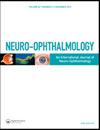Visual Agnosia Mimicking Memory Impairment: A Case Report of Posterior Cortical Atrophy
IF 0.8
Q4 CLINICAL NEUROLOGY
引用次数: 0
Abstract
ABSTRACTVision specialists will benefit from increased awareness of posterior cortical atrophy (PCA) syndrome. Failure to adequately identify the chief complaint as a visual symptom may lead to incorrect diagnosis or diagnostic delay. A previously healthy, 59-year-old woman presented with a 5-year history of ‘losing her stuff’. Upon psychiatric and neuro-ophthalmological evaluation, this symptom was better recognised as a feature of visual agnosia and simultanagnosia. She also presented with multiple previously unrecognised symptoms indicative of higher visual processing dysfunction, such as alexia without agraphia, ocular motor apraxia, optic ataxia, prosopagnosia, akinetopsia and topographagnosia, so further assessment to investigate for PCA was carried out. After a work-up including cognitive assessment, brain structural/functional imaging, and laboratory tests she was diagnosed with visual-variant Alzheimer’s disease. Patients with PCA merit a detailed review of their symptoms, as well as the use of office tests such as cognitive evaluation tools, different types of perimetry, colour vision tests, and non-delayed psychiatric consultation for correct management and assessment. This report will emphasise five key aspects to be considered when evaluating patients with PCAKEYWORDS: Posterior cortical atrophyAlzheimer’s diseaseAlzheimer’s visual variantvisual agnosiamemory deficitAtypical alzheimer’scase report Authors’ contributionsJCB and KCA drafted the manuscript and collected patient information, JCB critically revised the manuscript for intellectual content and supervised the project. All authors have read and approved the final manuscript.Disclosure statementNo potential conflict of interest was reported by the authors.Consent for publicationWritten informed consent was obtained from the patient.Ethics approval and consent to participateThe study was approved by the internal review board of Asociación para Evitar la Ceguera en México, I. A. P.Additional informationFundingThe authors reported there is no funding associated with the work featured in this article.视觉失认症模仿记忆障碍:后皮质萎缩1例报告
视觉专家将受益于对后皮质萎缩(PCA)综合征意识的提高。未能充分识别主诉作为视觉症状可能导致诊断错误或诊断延误。一名健康的59岁女性出现了5年的“失去她的东西”的历史。经精神病学和神经眼科评估,这种症状被更好地认为是视觉失认症和同时失认症的特征。她还表现出多种先前未被认识到的症状,表明有更高的视觉加工功能障碍,如无失写症的失读症、眼运动失用症、视觉共济失调、面孔失认症、动位失认和地形失认,因此进行了进一步的评估以研究PCA。在进行了包括认知评估、大脑结构/功能成像和实验室检查在内的检查后,她被诊断出患有视觉变异性阿尔茨海默病。PCA患者需要对他们的症状进行详细的检查,并使用办公室测试,如认知评估工具、不同类型的视野检查、色觉测试和非延迟的精神病学咨询,以正确的管理和评估。本报告将强调评估pcak患者时应考虑的五个关键方面关键词:后皮质萎缩阿尔茨海默病阿尔茨海默病视觉变化视觉失智记忆缺陷非典型阿尔茨海默病病例报告作者的贡献sjcb和KCA起草了手稿并收集了患者信息,JCB对手稿的智力内容进行了批判性修改并监督了该项目。所有作者都阅读并批准了最终稿件。披露声明作者未报告潜在的利益冲突。发表同意获得患者的书面知情同意。伦理批准和同意参与该研究是由内部审查委员会Asociación para Evitar la Ceguera en macimxico, i.a.p.p批准的。附加信息:资金来源作者报告没有与本文所述工作相关的资金来源。
本文章由计算机程序翻译,如有差异,请以英文原文为准。
求助全文
约1分钟内获得全文
求助全文
来源期刊

Neuro-Ophthalmology
医学-临床神经学
CiteScore
1.80
自引率
0.00%
发文量
51
审稿时长
>12 weeks
期刊介绍:
Neuro-Ophthalmology publishes original papers on diagnostic methods in neuro-ophthalmology such as perimetry, neuro-imaging and electro-physiology; on the visual system such as the retina, ocular motor system and the pupil; on neuro-ophthalmic aspects of the orbit; and on related fields such as migraine and ocular manifestations of neurological diseases.
 求助内容:
求助内容: 应助结果提醒方式:
应助结果提醒方式:


